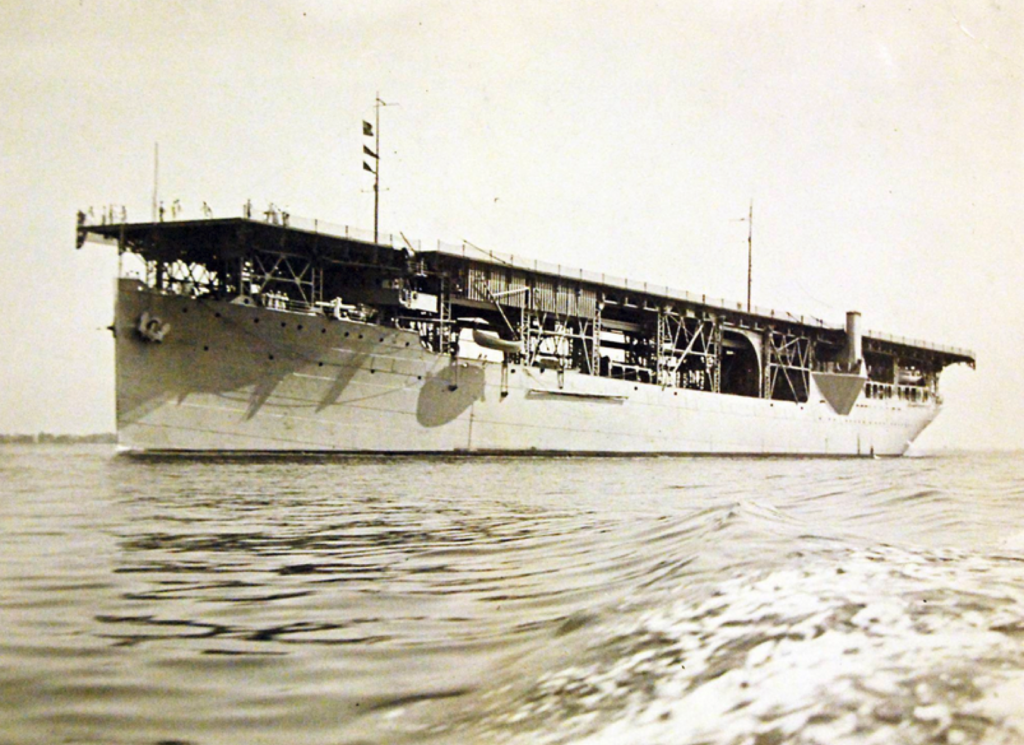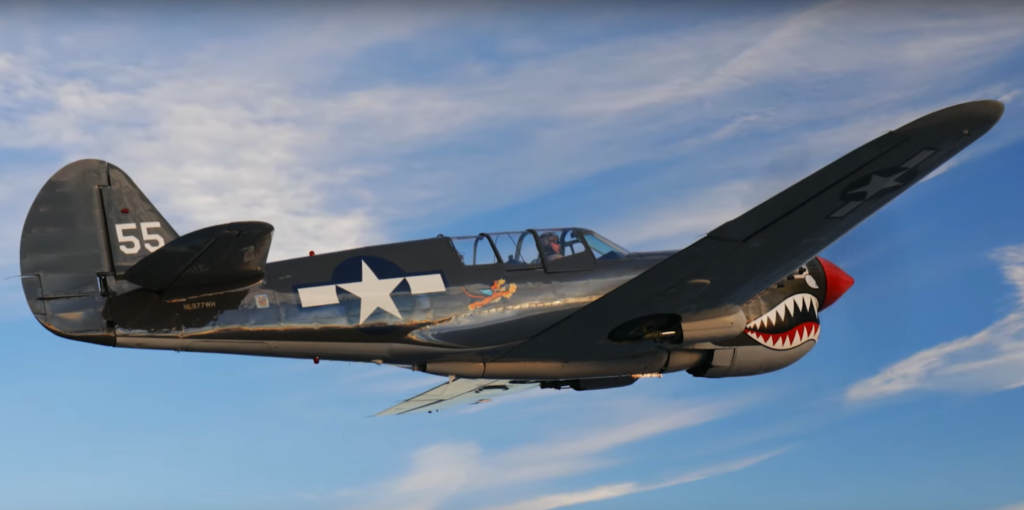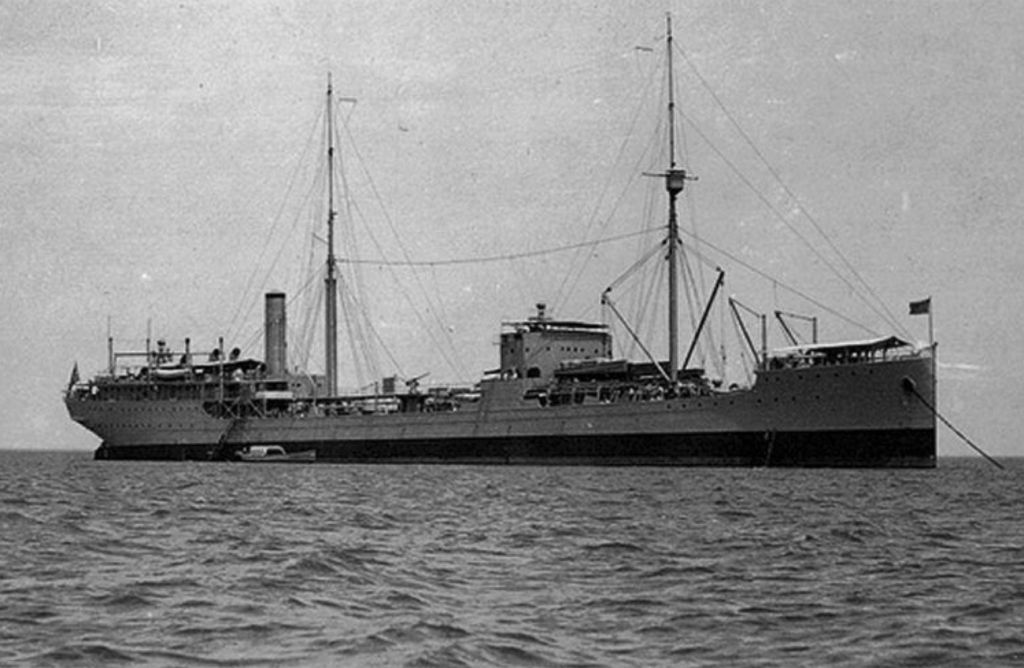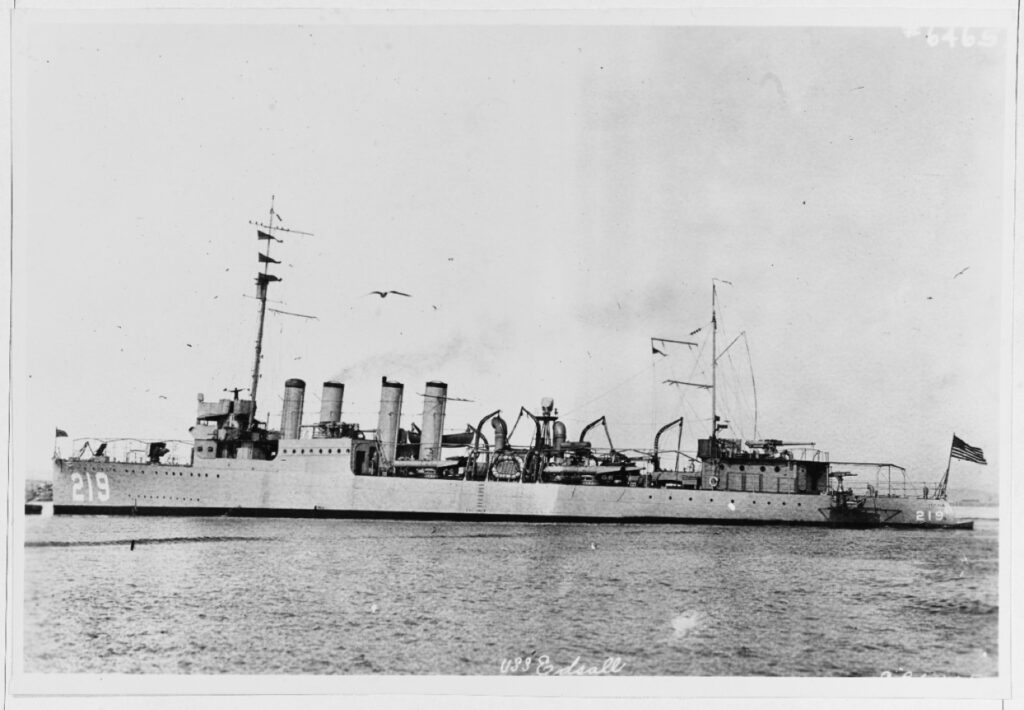I MEANT to write something about this two years ago but wasn’t sure I knew enough about it. Still not sure. What kind of story is it? Don’t know that, either.
Here goes…

First of all, don’t believe everything you see carved in stone. There are but two facts here: Warren Edwin Johnson, U.S. Navy.
I have no idea what the kid was like. He might have been the smartest kid in class, might have been a hellraiser. Maybe he was both. He joined the peacetime Navy after high school and lost his life at 20 fighting the Japanese in the Java Sea. He died somewhere between February 27, 1942 and I would say March 2 at the latest.
The Navy says February 27. Highly unlikely. We’ll get into that.
Here he is at 18, a graduate of Cranston High School. I doubt he ever got carded in a liquor store.

In It’s a Wonderful Life, Jimmy Stewart did it the other way around, right? He was 38 in real life, played 21 in the movie. At 21 George Bailey appeared to be 38, nobody noticed.
According to the Navy’s official WWII casualty list, Warren Edwin Johnson’s rank was Fireman First Class, not second class.
His ship, USS Langley, went to the bottom on February 27, not February 28 as the stone would have it. At first I thought there might be an international dateline issue here, but no, that would have made the stone a day off in the opposite direction, I think. Correct me if I’m wrong.
The Langley wasn’t an aircraft carrier. Not in 1942. So Went down with the aircraft carrier Langley isn’t right. Even if you shorten it—we’ll get to this, too—shorten it to Went down with the Langley, that’s probably not what happened, either.
The Langley had been an aircraft carrier, America’s first carrier, but that was in the 20s and early 30s. At that time it was equipped to launch antique planes of World War I vintage, and it could recover them as well, if precariously and often with significant damage. But in 1942, the Langley no longer had its carrier designation. It was a seaplane tender with no ability to launch or retrieve the fighters of the day.

In 1942, the ship still had a flight deck. It wasn’t as long as the original flight deck but you could park fighter planes on it and sail them from one port to another. That’s what the Langley was doing 80 years ago today, when nine twin-engine, long-range Japanese bombers caught it 100 miles off the south coast of Java, in broad daylight and under clear skies.
The brass had called Langley’s mission doomed from the start, but it was undertaken nonetheless to pacify our balky Dutch ally, determined to keep, at all costs, (mostly ours), colonial possession of what was then the Dutch East Indies.
The Langley was attempting to deliver 32 fully assembled P-40e Warhawks to the Dutch at Tjilatjap. Japanese bombers flying out of a captured airfield on Bali put a stop to it.

The Langley could carry warplanes but couldn’t defend them. The ship was armed but ineffectively so when it came to high-altitude bombing. It had machine guns for fighting back against low-level strafing runs by the Zeros escorting the bombers, and that happened, but when it came to high-altitude bombing the Langley was basically a live target on what amounted to a couple of practice runs for the bomber pilots.
The ship’s 3-inch guns couldn’t shoot higher than 12,000 feet. Couldn’t shoot at a fast enough rate anyway, even if the bombers had cooperated by attacking from a lower altitude.
You don’t have to read anything deeper than the Langley’s wiki to know this kid probably didn’t die on the day the Langley was attacked. He may have, but it’s not likely. Not even with five 550-pounders finding the ship from 15,000 feet up.
For all the unimaginable violence of that day, blast damage, fires raging below, Warhawks afire on the flight deck, a surprisingly small number of Langley men died.
Odds are this sailor lived through the bombing, abandoned the Langley when the order was given, and was picked up by one of two destroyers, USS Edsall or USS Whipple. Langley men aboard the Whipple were soon moved over to the Edsall, and orders would be given a day later to transfer them at sea from the Edsall to the fleet oiler USS Pecos.
Well, they do that, move the Langley men off the Edsall and onto the Pecos, and the Japanese swoop in and sink both ships not too many miles apart.
The Pecos had been in port in Tjilatjap while the Langley was inbound with its 32 Warhawks. The captain of the oiler had been eager to get under way for some time, get out of Dodge while the getting was good. The Dutch wouldn’t hear of it. They wanted Java saved. If the only fleet oiler in the Dutch East Indies was at sea and ships didn’t need to come into Tjilatjap to take on fuel, the U.S. Navy would have no incentive to fight to the bitter end at Tjilatjap.
I’m not sure whether I read that rationale anywhere; it could be my own, right or wrong. Might be a thought that came to me while I was reading around the issue.

The Pecos finally gets permission to go to sea, over Dutch objections. Before it leaves port, the captain orders his crew to stockpile bamboo poles on deck on the chance his men might end up in the water, as have so many others. Things that float could come in handy.
Smart man! Those bamboo poles would save lives a day later.
He gets clear of Tjilatjap, sets course for the British Crown Colony of Ceylon, present day Sri Lanka, then comes word the Langley’s been bombed, abandoned, the Edsall and the Whipple are picking up survivors in the water. The Pecos is to forget Ceylon, rendezvous with the destroyers, take the Langley men aboard and head for safety in Australia.
Knowing the bare bones of the story, I hunted up a more thorough account, heavily footnoted, drawing on original sources and first-hand accounts, personal journals, letters, declassified war records, ours and theirs.
The story is one of a U.S. Navy operating in a state of abject confusion in the months after Pearl Harbor. It was unclear who had ultimate command of the Langley, maybe the Dutch, maybe the Americans. Orders were issued and countermanded and reissued multiple times. The Langley’s ordered to sail west, then east. It’s thought to be attached to a convoy evacuating Americans and war materiel to India where they can regroup, make a stand from there. Then suddenly it’s not attached to the convoy, except nobody tells the convoy commander. A Dutch admiral orders the Langley to Java despite that Java’s going to fall any day now. An American admiral finds out after the fact but he accedes to Dutch demands for U.S. planes and U.S. pilots to fly them. The Dutch have been on Java since 1800, stole its oil and rubber resources fair and square, not gonna stand for the Japanese stealing them, so, okay, our P40s are going to Java—oh shit, the .5o-cal ammo for the P-40s is on a ship halfway to India! Somebody go get the ammo!
On its final, fatal run to Java, the Langley’s looking for its destroyer escort but is ordered instead to rendezvous with a Dutch ship that can act as escort. The Dutch vessel turns out to be a minesweeper that can’t make half the knots the Langley can.
The skipper’s sweating the minutes, knows he’ll end up sailing for Tjilatjap in broad daylight. The on-again, off-again plan had been to get in under cover of darkness.
He leaves the minesweeper behind, sails on, is soon ordered to turn around and go back for it. He turns around, rendezvous with the minesweeper a second time, then the order is never mind, do what you were doing before, find the destroyers Edsall and Whipple, they can escort you in, that was our original plan, wasn’t it?
Joint allied command, they called it: ABDA, for American, British, Dutch, Australian. Four different nations calling the shots all at once.
Le fuc du clustaire as the French would say if they didn’t speak French, just made up words that vaguely sound French.
Here’s a good read, if a maddening one. As with most journeys into history, think of it as a primer on the naked ape as a born enabler of needless tragedy.

The author interviewed more than 100 survivors and war planners, or drew from existing interviews. He came away with quite a story if you can stand to read it. A story of “political expediency, bureaucratic bumbling, and indecision,” of men ordered to their deaths “on a pointless mission to serve a hopeless cause.”
I read it twice, did a little research on U.S. Navy sites, casualty lists, a few other online sources that seem reliable. There’s simply no way to say for certain the Langley was the last ship Warren Edwin Johnson served on before he went missing in action.
The Pecos collects the Langley survivors off the Edsall, the Japanese sink the Pecos, then comes the Whipple to re-rescue men it had rescued two days earlier.
If Warren Edwin Johnson didn’t die when the Langley was bombed, and didn’t make it onto the Whipple after the Pecos went down, he would have been among the 400 men the Whipple left to die when it was deemed too dangerous to continue the rescue.
The captain of the Whipple made the nightmare call to break off the rescue, abandon the Langley and Pecos men and save his own crew. He steamed away from men in the water, attacked a Japanese submarine, then went full steam ahead for Australia, barely had enough fuel aboard to get there.
Four hundred men left behind, many clinging to those bamboo poles from the Pecos. It’s night, high seas, many sailors have been blinded by the bunker oil released when the Pecos went down. Most are sick from having swallowed fuel. A shitty way to die for one’s country. Or in this case, for what?
Anyway, the Navy’s not going to tell 400 families their father, son, brother, uncle, was left behind on the water to die.
Check it out for yourself online: the Navy listed every missing-in-action Langley man as missing on February 27. It simply ain’t so. Most of those men were alive on March 1 when the Whipple had to fight for its own life and leave them behind.
From the book:
” ‘Submarine contact bearing 130 degrees true.’ Rescue operations ended abruptly as the destroyer quickly worked up to 15 knots and started to maneuver, looking for the submarine. The men clustered along both sides of her hull were left spinning and tumbling in the churned up wake and tossing waves. At 2148 the Whipple dropped two depth charges. Powerful shock waves raced out from the explosions’ centers, intended to smash the submarine pressure hull. Instead they smashed men.”
“She had picked up 233 men, about one-third of the men who were in the water… As the destroyer steamed through the knots of drifting sailors, they either called out plaintively to be saved or cursed the ship for leaving them. Soon their feeble cries were lost in the destroyer’s wake and were heard no more.”
What the Navy reported about the Langley would be closer to the truth about the Edsall. Almost every man aboard the Edsall went down with the ship. No American vessel was close enough to effect a rescue.

The Japanese, however, plucked a few Edsall survivors out of the water. The unluckiest men of all, you might say. Some sources say five men, others as many as eight. After the war, their decapitated remains were unearthed from a mass grave in Indonesia.
Things like that lend a certain historical perspective. Of course Americans would cheer the atomic bombings that ended the war in the Pacific. You would, too. Decades on, with victory won, war memories fading (fading for those who weren’t there), only then would Americans have the luxury of recognizing that innocent civilians in Imperial Japan had suffered in the madness of that time as well. But in 1945 it was you asked for it, you got it, Toyota. Most Americans understood that the Curtis LeMays on our side, our homicidal sons of bitches, absolutely had to do everything in their power to defeat the enemy’s homicidal sons of bitches.
Anyway… it’s important to see people in their own time. We all likely would have felt the same fears and joys they did.
The bombing attacks on the Langley, the Pecos and the Edsall happened south of Java while the main action, the Battle of the Java Sea, raged to the north. That’s not in the book, or not much. You can get that elsewhere.
North of Java the Japanese brought to bear overwhelming naval, air and infantry forces, routing, simultaneously, the Americans, the British, the Dutch, and the Australians.
Demoralizing, no doubt, right on the heels of Pearl Harbor.
Lt. Col. James Doolittle, a word about him as we wrap this up: Doolittle’s busy working on a morale booster, an audacious plan to launch B-25 medium bombers off an aircraft carrier, kill Japanese on home soil, then fly on and land in Flying Tiger country somewhere in China. Adventure, anybody? let’s see a show of hands. And up they go. Bombers are loaded aboard the carrier in San Francisco and Doolittle sails off into history.
His bold raid on Tokyo’s not going to happen until April, though. In February, western forces in the Pacific are just trying to stay alive. The Japanese have four carriers in the Java Sea, they dominate the skies, who knows, maybe they’ll be in Australia in a month. They had already bombed the hell out of Darwin, which is why so many Allied ships had been ordered to India to reorganize there, fight another day.
And here’s the kicker: with the Langley lost, its 32 Warhawks lost, a U.S. Merchant Marine ship sailing 12 hours behind the Langley somehow manages to get through to Tjilatjap. The Dutch were behind it; they had gotten that ship, too, pulled out of the India-bound convoy and diverted to Java.
And the ship gets there! An unbelievable feat! No one at the U.S. command level had thought it even remotely possible. But SS Sea Witch gets through. She delivers 27 crated P-40e Warhawks. Some assembly required.
All the Dutch have time to do is push the planes overboard in their crates. Push the planes overboard in their crates so the Japanese don’t put them together and fly them against the Allies.
Tony DePaul, February 27, 2022, Cranston, Rhode Island, USA


Thanks for writing this and thanks for remembering this generation. My parents lived through the Great Depression and World War II and both of them suffered terribly. I dealt with the effects of this until my mid thirties when I replaced my expectations of them with respect and understanding.
I saw the pivotal Phantom strip today, where the GWW reveals to Diana that he is going to Graveline Prision to rescue Savarna. This is the turning point when we see if and how the Phantom can alter the vision of Old Man Mozz. I am looking forward to seeing how this plays out. Its an interesting metaphysical premise for a story. Pure joy for this reader. I tell people that you, Tony, look “under the hood” of the Phantom Heritage and those explorations make it an even better adventure strip. Imagine seeing the current Phantom plan for his successor! We’ve only heard of these moments in tales from within the strip.
DC Comics wrote a series of “Imaginary Stories” where the writers had ideas that they did not want as part as the mainstream story line for their characters. They were allowed to do this and I guess that it gave them the opportunity to stretch their imaginations and writing skills.
Since this blog entry is still here, I take it you are very busy with the house. I hope all is well.
Yep, still slugging away. I’m working on exterior trim and a bit of earth moving. The AC contractor was here yesterday & today.
Thanks for the good word on the Phantom strip, Robert.
Wow, Tony, what a great write-up! It would have been a difficult and dangerous job to be a sailor of any kind back in those days, especially with conflicting leadership hell-bent on moving people, ships, and planes like chess pieces (albeit crappy chess players!). I like that you drew quick attention to the minute discrepancies just in the headstone alone. The true histories of many men and women are buried under bureaucratic bullshit.
Thanks, Will. Yeah, remember that heroic fable the military spun when football star Pat Tillman died in Afghanistan? Not even Tillman’s family bought into it. Then, after numerous investigations, we find out what really happened: members of his own platoon shot him. But that doesn’t sell the war. A Silver Star citation for heroism above and beyond the call sells the war.
Yes Tony, I remember the Tillman story, and if not for your sharp memory, I would have forgotten what happened there. The shooter was up on a ridge, if my memory serves me correctly.
Tillman’s platoon had split up into two or more groups, I seem to recall. It’s dark, everybody’s young, scared, heavily armed, what could possibly go wrong.
I just looked up the text of the myth the Army invented. Go to this link and search on the word “valor.” The Army must have Hollywood script writers making this stuff up.
https://www.govinfo.gov/content/pkg/CHRG-110hhrg42898/html/CHRG-110hhrg42898.htm
Excellent research. Terrible story. The peasants die for the kings.
So true. Influential families (that is, families with money) don’t sacrifice their offspring on the alter of the carnage due the gods. That’s for the little people.
Jeezus. That’s a worse disaster than the USS Indianapolis.
Given all the bureaucracy at the helm of the U.S. military, it’s a wonder we won any war.
Let’s go Pentagon!
The USS Pecos was a pretty crowded oiler. When it left Tjilatjap it had aboard survivors of three other wrecks. All Merchant Marine, I believe. The Japanese were sinking ships left and right.
That captain was a savvy guy. In Tjilatjap he had refused to take aboard any survivor who wasn’t able bodied, knowing they’d have to be abandoned if the ship came under attack, as indeed it did.
“Le fuc du clustaire.” Indeed.
’nuff said.